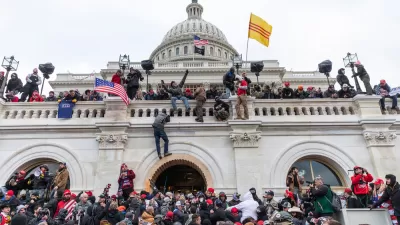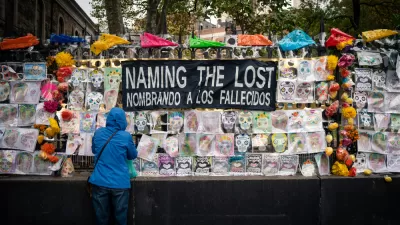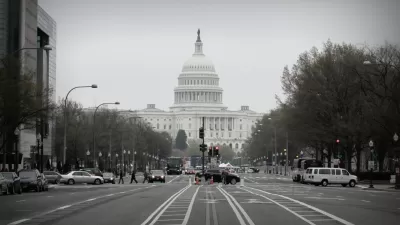The nation is now tasked with the challenge of changing course in the middle of multiple, global crises. The necessity of finding a way to overcome the failures of the past and lay the groundwork for a new kind of future has never been more clear.

The nation and world are still mired in the COVID-19 pandemic, and the news to start 2021 has been marked by mass death, insurrection, and fear that there's more to come. With multiple vaccines on the market, this should have been a hopeful time. Instead, the United States is crawling, ragged and bruised, toward normalcy, herd immunity, and the demise of the coronavirus.
The moment proves beyond any doubt that an effective recovery must commence long before the coronavirus has been vanquished, and urban planning and all its related disciplines will play a significant role in ensuring that recovery is sustainable (in every sense of the word), equitable, and regenerative. To borrow the phrase from the campaign platform of newly inaugurated President Joe Biden, it will be the work of planners to "build back better." In the words of inaugural poet Amanda Gorman, "Even as we grieved, we grew."
The word "better" is dangerous in a planning context, of course. What is better for oil companies, for example, is not better for the world—and that's about the simplest possible elucidation of this point about the slippery nature of the word "better." It gets much, much more complicated when conflicting notions of liberty and equality are introduced. It's complicated assuming good faith—there is still plenty of reasonable disagreement about how to build a better world. It should also be very clear that many people in this country abandoned reason and good faith long ago.
The question presenting itself in every development and plan for an indefinite period will be: Does this correct the injustice and pollution of the world, or does it compound it? Some of the impacts of the pandemic won’t be visible for years, so these decisions will require constant re-evaluation.
Equity and Disparate Impact
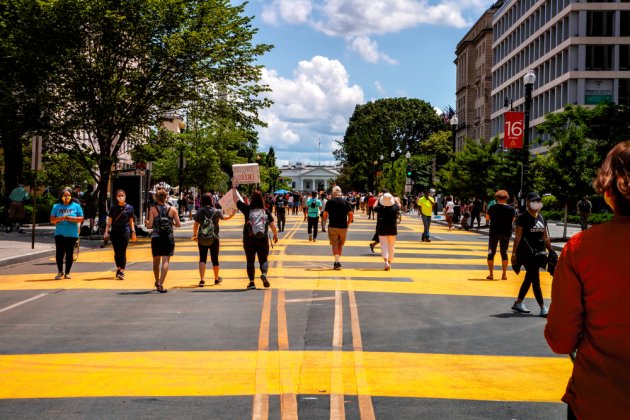
One of the most painful and tragic conclusions of the pandemic and the Trump administration is the massive failure of equal protection under the law as guaranteed by the U.S. Constitution. After the Trump administration spent four years attacking the concepts of equal protection and disparate impact in the country's housing laws, in its application of police force, and in its approach to natural disasters and the pandemic, there's never been more evidence of the fundamental failure of the U.S. government and legal systems to provide all Americans equal protection.
Some eight months after a wave of civil unrest in response to police murders of multiple Black Americans that continues to this day, the pandemic is ravaging communities of color around the country. The statistics from Los Angeles, a hot zone of infection since December, are almost too shocking to be believed. Rong Lin II and Luke Money reported the brutal facts on January 14:
People living in the most impoverished neighborhoods of the county are now averaging about 36 deaths a day per 100,000 residents. By contrast, those living in the wealthiest areas are experiencing about 10 deaths a day per 100,000 residents.
And
Latino residents in L.A. County are dying at an astonishing eight times the rate they once did — from 3½ daily deaths per 100,000 in early November to 28 deaths a day now for every 100,000.
And
The COVID-19 mortality rate among Black residents soared from 1 death a day per 100,000 to more than 15 deaths a day per 100,000.
That's disparate impact, if ever there was any, and the story is repeated for cities and communities all over the country. By the standards of the United States Constitution, the outcomes of the pandemic fail the test of democracy.
The Biden administration took the first steps toward restoring the disparate impact doctrine (just days after the Trump administration's Department of Justice took a parting shot at the concept of disparate impact), but for the next year and for all the years that follow, the country's progress toward a more equal society will be measured by how the concept of disparate impact is bolstered or neglected by the law, whether the country is actively and affirmatively sowing the seeds for equal protection, or whether the various levels of government in the United States continue to permit and even incentivize the conditions that allow crises to disproportionally harm low-income individuals and communities of color.
Evictions and Foreclosures
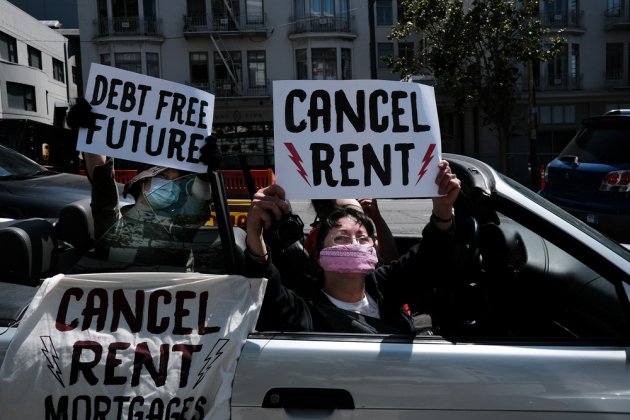
The disparate impacts of the pandemic aren't just evident in the health outcomes. Economic effects are also starkly divided along lines of race and class. According to a recent report by the Bay Area Equity Atlas, one in three low-income renters in California are behind on rent, and renters of color are two to three times as likely to be behind on rent as white renters.
Before the pandemic, the housing affordability crisis in many growing American cities resulted in homeownership leaving reach of more of the middle class, record numbers of homeless, increasing levels of rent burden, and whole neighborhoods and cities with families packed into homes and apartments to pay the rent. Many of those pre-existing conditions are now exacerbating the public health outcomes of the pandemic—people living in crowded conditions have faced the highest rates of fatalities and deaths throughout the pandemic, a point starkly illustrated by an article by Tim Arango for the New York Times and Brittny Mejia in the Los Angeles Times a few days before this writing.
The housing crisis still threatens to collapse any hope of economic or social recovery in the wake of the pandemic. Many renters and homeowners are faced with an impossible task—businesses have been shut down by government order and crippled by large numbers of infections. Those most at risk of infection at the workplace also lack the kind of sick pay and leave policies to safely recover from the illness.
A patchwork of eviction moratoria at various levels of government, like the federal eviction moratorium the CDC recently extended until March 31, served as a bulwark against the looming risk of evictions and foreclosures since the beginning of the pandemic. But there is evidence that eviction protections have been wholly inadequate to the scale of the pandemic crisis, and that the federal government must spend tens of billions more to stabilize the housing market for distressed renters. Rent has not been forgiven, only deferred—a new economic crisis will arise when the moratoria give way to evictions and debt. The state of California expects 240,000 new eviction cases—double the typical year—when the state's eviction protections expire at the end of January.
The risk of millions left homeless or buried under a mountain of debt is one of the greatest humanitarian crises of the pandemic. With every passing month, the scale of the challenge facing struggling renters and property owners grows. Repeated extensions of eviction moratoria only delay the inevitable—the due date will come, and until then, interest will compound.
Investing in Automobile Dependence
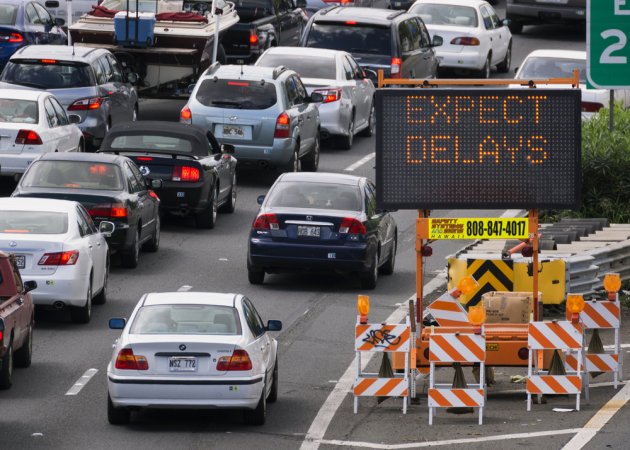
The federal government has already spent trillions to stabilize the country's economy during the economic downturn resulting from the pandemic. There could be more stimulus spending on the way—the Biden administration planning a $1.9 trillion stimulus.
Lessons from the last great stimulus, implemented in the first months of the Obama administration at the height of the Great Recession, should be fresh enough to inform the choices made during this current crisis, but there are no guarantees. Opinions vary, widely, about what kind of infrastructure investment should be the foundation for economic recovery.
Even when political power promises a climate-friendly approach to economic stimulus, there's usually an automobile-oriented catch. The recent Senate confirmation hearings for the Transportation Secretary nominee Pete Buttigieg was the latest proof of this concept. While Buttigieg and some of the senators in the hearing repeatedly voiced concerns about the social and environmental consequences of auto-oriented federal transportation policy, deference was still paid to the status quo. Another example can be found in the last-minute changes that helped the COVID-19 Emergency Relief Act of 2020 clear the final legislative hurdles for adoption in December: In the 11th hour, $10 billion for state departments of transportation suddenly appeared. That money is expected to help state DOTs continue some of the road building projects impacted by declining gas tax revenues during the pandemic.
An eagerness—let's call it uncritical exuberance—to celebrate new funding for active transportation and public transit projects (like the money for public transit in the aforementioned COVID-19 Emergency Relief Act of 2020, cut from $15 million to $14 million in the 11th hour) can neglect the truth about the relative size of funding still devoted to the auto-oriented status quo. Even the Green New Deal has been criticized for its lack of priority on the land use reforms that will make an essential contribution to the reduction of carbon emissions, congestion, and the social and economic ills perpetuated by automobile dependency.
Will the next episode of federal stimulus be any different? President Jose Biden and many others in government, like the supporters of the Green New Deal, seem committed to a more sustainable path forward. President Biden has implemented a number climate change related executive orders in his brief time in office, but time and a great deal of effort will tell of these preliminary actions make any dent in the car-centric status quo. President Biden is also a famous supporter of Amtrak, for example, so advocates have expressed cautious optimism for high-speed rail funding and the long-neglected Gateway Project connecting Amtrak and other rail lines to New York.
The fact remains that most Americans do not remove cars from their visions for the future—whether they have accepted the realities of climate change or not. Politicians reflect this thinking to an even more extreme degree (as evidenced by a quick willingness to answer Elon Musk's phone calls and open the doors for "flying cars" without a second thought).
Will the next round of stimulus acknowledge the immense environmental and social damage done by automobile dependence? Or will it use kinder, gentler language and sprinkle in a few trifles to placate the bike and train lobbies while continuing to spend the big bucks on ever more freeways and parking lots? Or will it make tangible progress toward safe, regenerative infrastructure?
Data for vehicle miles traveled, employment, and housing prices will reveal the consequences of the answer to this question for years and decades to come. The work of holding the Biden administration accountable to its campaign promise to battle climate change has already begun.
Existing Building Stock as Affordable Housing Supply
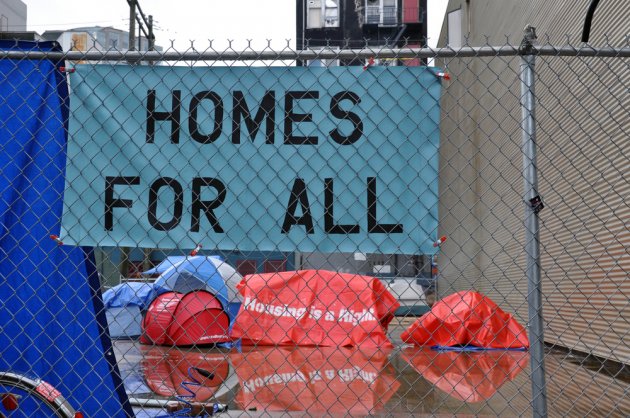
In a trend that picked up steam in 2020 without gaining much attention outside of local news, more cities are leveraging existing building stock of all varieties as a resource for affordable and emergency housing. The trend is taking many shapes—the common threads of all these efforts are creativity and the desired outcome.
Vancouver, British Columbia made a significant early contribution to this effort in the past year, launching two new housing programs that leverage public money to leasing and purchasing existing hotel rooms and single-room occupancy (SRO) hotels. One of the city's plans targets 105 SRO hotel buildings, totaling around 2,500 rooms, for purchase and renovation as affordable and supportive housing. Since the plan for the city to buy SROs was announced, values of the buildings have dropped, making the task potentially much less expensive.
In Toronto, the city is exploring the idea of legalizing rooming houses to provide more legal, safe affordable options in the city, making it easier for property owners and developers to upgrade existing rooming houses and build new. Both the Vancouver and Toronto examples came shortly after the Canadian government's commitment to provide $1 billion for affordable housing programs during the pandemic.
The examples continue: A recently announced $100 million fund will preserve existing affordable housing near transit in Atlanta. A law included in Gov. Andrew Cuomo's draft state budget includes a proposal that would loosen zoning restrictions for conversions of existing hotels and office buildings into residential units, potentially paving the way for a wave of adaptive reuse projects in Manhattan. California's Project Roomkey faced challenges and came up well short of its intended goals, but the effort to buy, lease, and convert thousands of hotel rooms for homeless housing and emergency quarantining during the pandemic is, at least in theory, history making. An article written by Patrick Sisson and published by Bloomberg CityLab in January proposes the idea of converting empty retail spaces and shopping malls into housing—an idea that would mark, if undertaken at scale, a major departure from traditional adaptive reuse practices (i.e., converting historic office or industrial buildings into housing) with the potential to significantly alter the fabric of the built environment in the United States.
The economic crisis and widespread upheaval of lifestyles as a result of the pandemic are likely to create more opportunities like those above in most cities round the country and the continent. Usually, when one large city takes the first step toward a massive shift in its use of its resources in land and buildings, more quickly follow suit.
Post-Population Growth
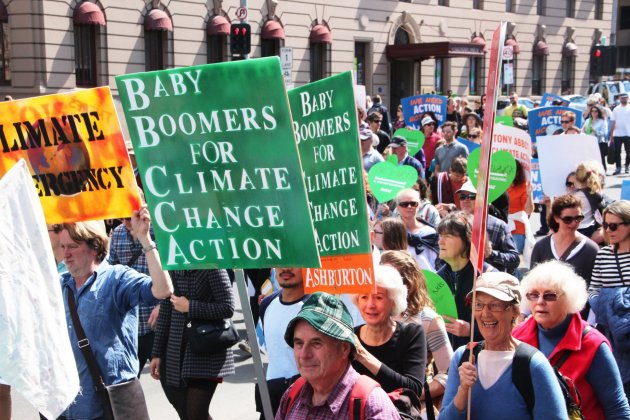
Outside of the U.S. Rust Belt, many Americans have never lived in a world, country, or city with a declining population. Population trends before and during the pandemic are likely to change that reality within most of our lifetimes.
Many cities thought to be permanently growing have, in fact, been declining in population for years. Some of the most famous and culturally significant cities in the world, like New York City, Paris, London, and Tokyo, for unique reasons in each example. Media attention throughout much of the pandemic has focused on the potential of the pandemic to spur migration away from large cities as residents seek more space to navigate the isolation and public health risks of the pandemic and a large, wealthy share of the population is empowered to work from home. According to a recent Statistics Canada survey, more than 50,000 Toronto residents moved away from the city between July 2019 and July 2020. As recently as 2019, sources analysis touted Toronto as the fastest growing city, by net population, of any city in Canada and the United States.
Migration trends as a result of the pandemic are certainly worth watching and will require rigorous analysis as the effects of the pandemic and the resulting economic downturn become apparent in the coming decades, but in the post-pandemic world, declining population will become more and more a concern of global scope.
Birth rates were declining worldwide before the pandemic, to the point that one group of researchers predicted that the world's population will start to decline by 2065—a future once though nearly impossible. Such a global decline in population would have dramatic effects on the economy, creating new incentives for immigration to drive economic growth, and numerous challenges in delivering public goods and services.
The trend toward declining birth rates is also evident in the United States. In 2017, birth rates hit a 30-year low. In 2018, the U.S. birth rate declined again. There's some evidence that the economy factors in declining U.S. birth rates: researchers have shown that birth rates declined the most where housing prices increased the most. Time will tell the extent of the effect, but the pandemic seems to have exacerbated those trends. According to recent analysis by NBCLX, birth rates plummeted in December 2020 compared to the same month a year earlier—down 8 percent in Florida, 7 percent in Ohio, and 5 percent in Arizona. The effects of declining population would touch every corner of the country—even the fastest growing locations in the country (we're looking at you, Texas).
Within the span of a generation, the U.S. went from the Millennial baby boom to historically low birth rates. The coming years are likely to rewrite the record books again. Forget the 20th century notion of the "Population Bomb" as one of the most pressing emergencies on the planet. It's possible that the world has already crossed that bridge (but not in the way the 1968 book with that title predicted), and there's no turning back. Declining national and global population is increasingly likely to require an almost comprehensive rethinking of planning and development within the next couple of decades. Savvy planners should start preparing for that new reality now.
For more reading on related themes of planning during and after a pandemic, see also part one and two of Planetizen's review of the lessons from 2020.

Maui's Vacation Rental Debate Turns Ugly
Verbal attacks, misinformation campaigns and fistfights plague a high-stakes debate to convert thousands of vacation rentals into long-term housing.

Planetizen Federal Action Tracker
A weekly monitor of how Trump’s orders and actions are impacting planners and planning in America.

San Francisco Suspends Traffic Calming Amidst Record Deaths
Citing “a challenging fiscal landscape,” the city will cease the program on the heels of 42 traffic deaths, including 24 pedestrians.

Defunct Pittsburgh Power Plant to Become Residential Tower
A decommissioned steam heat plant will be redeveloped into almost 100 affordable housing units.

Trump Prompts Restructuring of Transportation Research Board in “Unprecedented Overreach”
The TRB has eliminated more than half of its committees including those focused on climate, equity, and cities.

Amtrak Rolls Out New Orleans to Alabama “Mardi Gras” Train
The new service will operate morning and evening departures between Mobile and New Orleans.
Urban Design for Planners 1: Software Tools
This six-course series explores essential urban design concepts using open source software and equips planners with the tools they need to participate fully in the urban design process.
Planning for Universal Design
Learn the tools for implementing Universal Design in planning regulations.
Heyer Gruel & Associates PA
JM Goldson LLC
Custer County Colorado
City of Camden Redevelopment Agency
City of Astoria
Transportation Research & Education Center (TREC) at Portland State University
Jefferson Parish Government
Camden Redevelopment Agency
City of Claremont


























